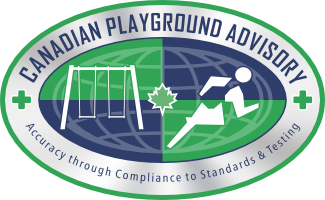Relative Merits Surfacing for Playgrounds
The surface under and around a play structure is defined in the CSA Z614-M90document as "Protective Surface" and must extend a minimum 6’ beyond all stationarystructures. The performance of the "protective surface" is defined in 2 standardsdeveloped at ASTM (American Society for Testing and Materials) for the measure ofimpact attenuation (ASTM F1292) and Standard Specification for Accessibility ofSurfaces Under and Around Playground Equipment (ASTM PS-83). These standardsset out the performance characteristics, test procedures, and site test procedures forthe surfaces once installed.
The ASTM F1292 standard sets the minimum standards for impact attenuation (Gmax<200 and HIC <1,000) from the height specified by the first owner/operator of the playsurface. It must be remembered that impacts greater than those of the pass fail criteriacould result in a life threatening injury. In addition all playground surfaces mustcontinue to be maintained over time to the pass fail criteria of the ASTM F1292. As aresult the performance demanded by the first owner operator should be lower at thetime of installation.
For the EVERPLAY poured in place surface this is a Gmax lessthan 161 and HIC less than 950.For a playground surface to be accessible it must pass the requirements of the ASTMPS-83. Sand or pea gravel along with most loose fill materials will not meet theserequirements. The only surfaces that have been specifically tested according to thisprocedure and have passed are both engineered wood systems, Woodcarpet andFibar. Most synthetics following the requirements set out by the Building Codes forslopes should allow for accessibility, however the actual certification can only be donethrough PS-83.



